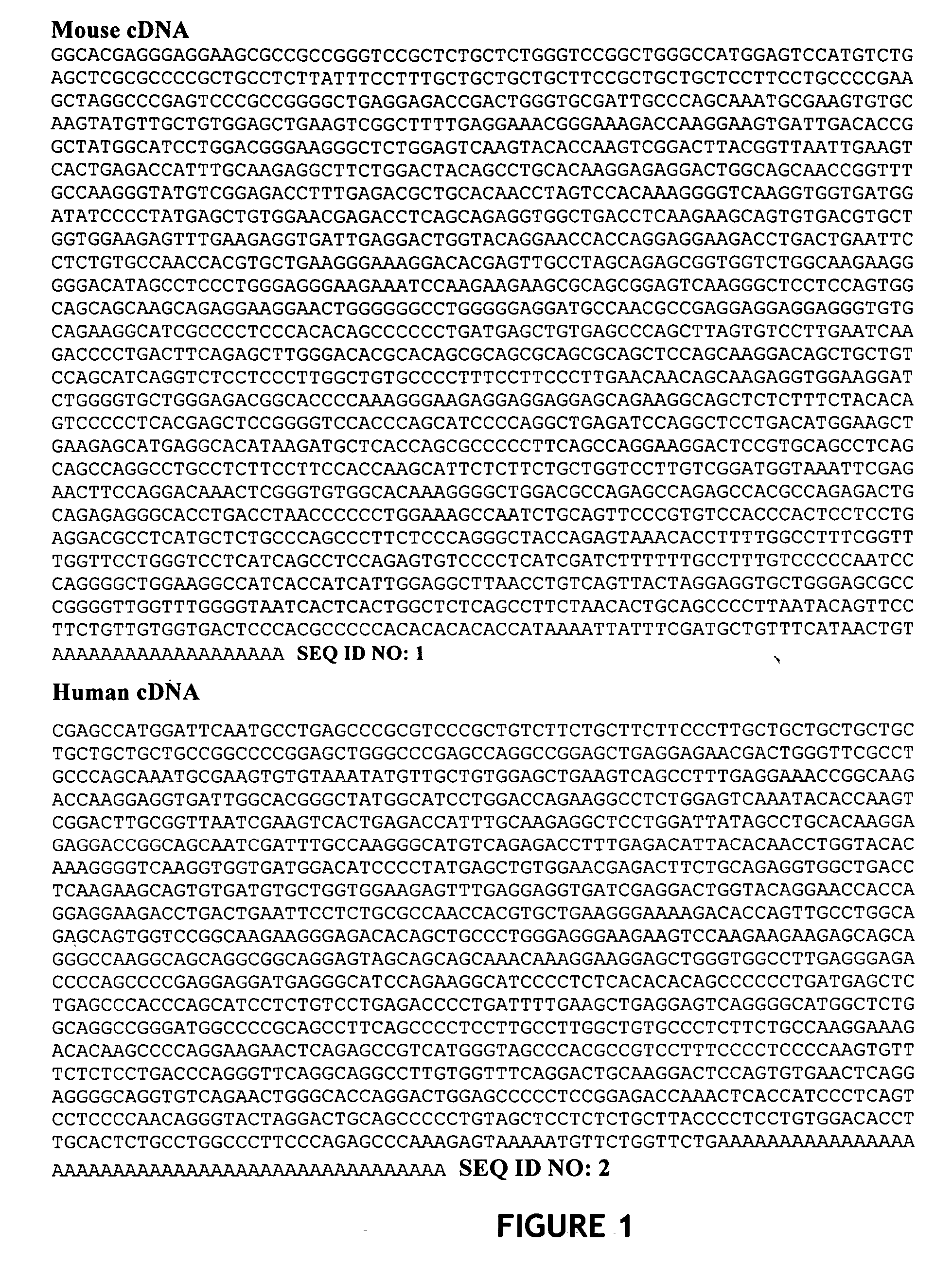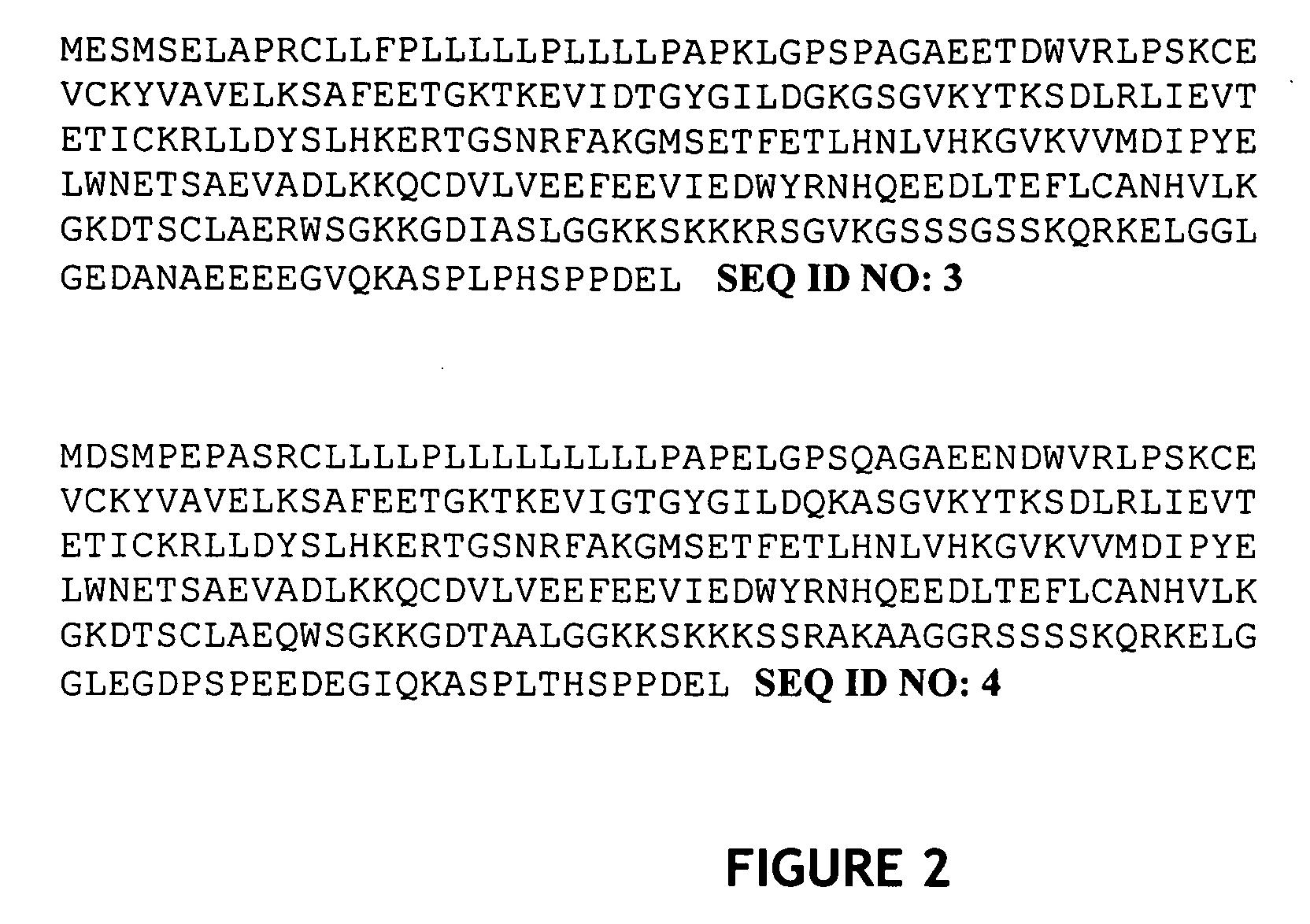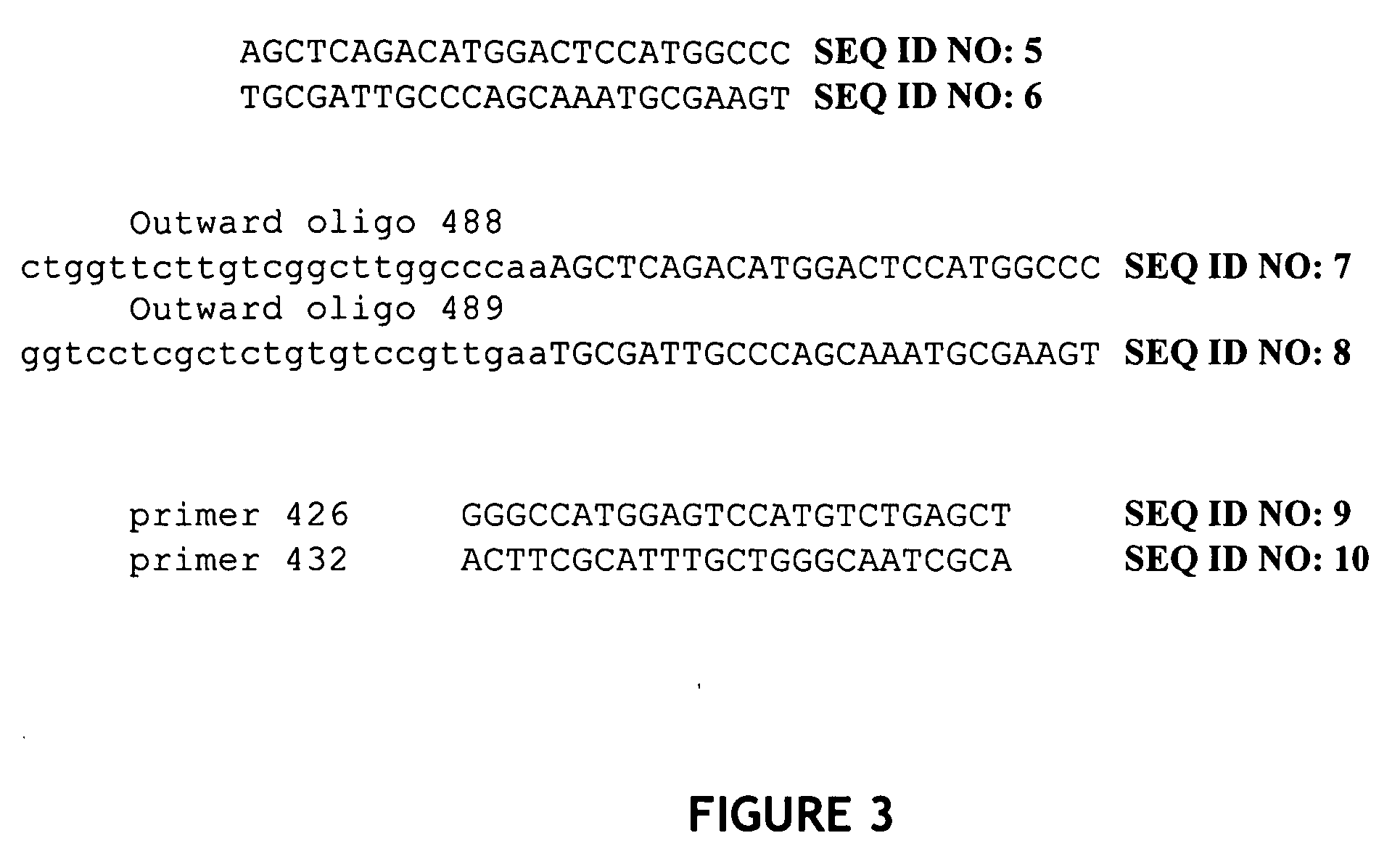Transgenic mice containing TRP gene disruptions
a technology of trp gene and transgenic mice, which is applied in the field of transgenic mice, can solve problems such as dna sequence disruption, and achieve the effects of reducing body length, reducing body weight, and reducing body weigh
- Summary
- Abstract
- Description
- Claims
- Application Information
AI Technical Summary
Benefits of technology
Problems solved by technology
Method used
Image
Examples
example 1
Knockout of Target T243 and Analysis of Homozygous Knockout Mutant Mice
[0250] In one embodiment, the targeting construct was introduced into ES cells derived from the 129 / OlaHsd mouse substrain to generate chimeric mice. The F1 mice were generated by breeding with C57BL / 6 females, and the resultant FINO heterozygotes were backcrossed to C57BL / 6 mice to generate F1N1 heterozygotes. The F2N1 homozygous mutant mice were produced by intercrossing F1N1 heterozygous males and females.
[0251] Genomic DNA from the recombinant ES line was assayed for homologous recombination using polymerase chain reactions (PCRs). Both 5′ PCR reconfirmation and 3′ PCR reconfirmation was performed. The method employed a gene-specific (GS) primer, which was outside of and adjacent to the targeting vector arm, paired in succession with one of three primers in the insertion fragment. The “DNA sample control” employed a primer pair intended to amplify a fragment from a non-targeted genomic locus. The “positive ...
example 2
Transgenic Mice Overexpressing T243
[0254] Production of Transgenic Mice by Pronuclear Injection
[0255] To investigate the role of T243, two lines of transgenic mice were generated by pronuclear injection. Specifically, transgenic mice comprising a chicken beta actin promoter to drive high level expression of the mouse T243 cDNA were created. The cDNA was a full length T243 cDNA that did not have any additional fusion tags. More particularly, a T243-specific targeting construct based on SEQ ID NO: 19 (see FIGS. 8A-C) was created.
[0256] The targeting vector containing the chicken beta actin promoter driving the T243 cDNA was digested and gel-purified to remove the plasmid vector backbone sequences. The targeting construct was microinjected into the male pronucleus of a fertilized zygote. Embryos were transferred into host recipients for gestation. After weaning, tail biopsies were screened for the presence of the transgene. Founders, containing the transgene, were bred to C57BL / 6 mi...
example 3
[0257] RT-PCR Expression. Total RNA was isolated from the organs or tissues from adult C57BL / 6 wild-type mice. RNA was DNaseI treated, and reverse transcribed using random primers. The resulting cDNA was checked for the absence of genomic contamination using primers specific to non-transcribed genomic mouse DNA. cDNAs were balanced for concentration using HPRT primers.
[0258] RNA transcripts were detectable in all tissues analyzed as shown in Table 1.
TABLE 1RT-PCR gelTest DateJul. 23, 2001 14:16Gene243skinweakES Cell Line242gallbladderweakwhole brainweakurinary bladderweakcortexweakpituitary glandweaksubcortical regionweakadrenal glandweakcerebellumweaksalivary glandmediumbrainstemweakskeletal muscleweakolfactory bulbweaktongueweakspinal cordweakstomachmediumeyesweaksmall intestineweakharderian glandmediumlarge intestineweakheartmediumcecumweaklungmediumtestismediumlivermediumepididymisweakpancreasstrongseminal vesicleweakkidneymediumcoagulating glandmediumsple...
PUM
| Property | Measurement | Unit |
|---|---|---|
| pH | aaaaa | aaaaa |
| pH | aaaaa | aaaaa |
| temperature | aaaaa | aaaaa |
Abstract
Description
Claims
Application Information
 Login to View More
Login to View More - R&D
- Intellectual Property
- Life Sciences
- Materials
- Tech Scout
- Unparalleled Data Quality
- Higher Quality Content
- 60% Fewer Hallucinations
Browse by: Latest US Patents, China's latest patents, Technical Efficacy Thesaurus, Application Domain, Technology Topic, Popular Technical Reports.
© 2025 PatSnap. All rights reserved.Legal|Privacy policy|Modern Slavery Act Transparency Statement|Sitemap|About US| Contact US: help@patsnap.com



